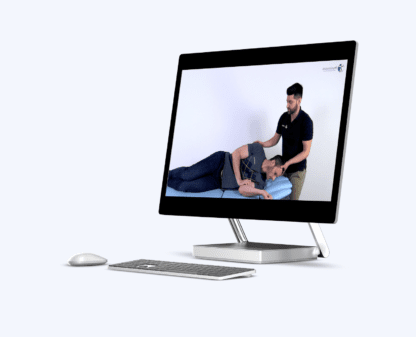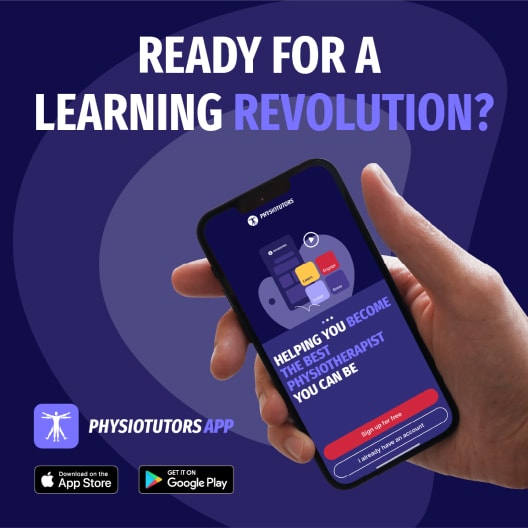An 8-Week Neuromuscular Training Program After Concussion Reduces 1-Year Subsequent Injury Risk

Introduction
Data examining individuals that sustained a concussion indicate an increased risk of subsequent musculoskeletal injury in the period after return to play. It is not fully understood why, but it appears that an inefficient integration of brain networks may relate to this increased risk. Good neuromuscular control is primordial for exercise, and dysfunction – which may arise from problems with attention, orientation, awareness, etc – is believed to be one of the most important factors contributing to the increased injury risk often seen in the post-concussion return to play period. The majority of research focusing on concussion rehabilitation focuses on aerobic exercise – which is good as it is beneficial – thereby leaving the neuromuscular rehabilitation in the cold. As neuromuscular rehabilitation showed promising results in adolescents without concussion, the aim of this study was to evaluate the efficacy of neuromuscular training after concussion in young athletes.
If you are interested in the recommended diagnosis and treatment of a sports-related concussion, we refer you to the following video.
Methods
A prospective randomized controlled pilot study was conducted to investigate the efficacy of integrating a neuromuscular training after concussion in adolescents. Participants were randomly assigned to the intervention group performing the neuromuscular training or to the standard of care group, only receiving instructions to comply with the recommendations regarding return to play made by their physician.
The neuromuscular training after concussion included plyometric, strength, technique and balance training and also focussed on performing dual tasks. These dual tasks progressed throughout the course of the rehabilitation and both cognitive and motor progressions were made weekly based on the subjects’ understanding, and their ability to successfully complete each exercise with minimal correction. Sessions were held twice per week for 8 weeks and were supervised.
The primary outcome of interest was the occurrence of a sports-related time-loss injury during the 1-year study monitoring period. As a secondary purpose, the efficacy of the neuromuscular rehabilitation program to reduce the risk of injuries in athletes returning to sports was studied.
Results
After the return to play, fewer lower extremity musculoskeletal injuries were seen in the neuromuscular rehab group (36% versus 75%). Players who followed the standard of care instructions were 3.56 times more likely to get injured than players who participated in the neuromuscular rehabilitation program (95% CI, 1.11-11.49; P = .03). Ankle sprains were the injuries that were most commonly seen.
Within the first 90 days post-concussion, none of the individuals from the neuromuscular rehabilitation group got injured, while half of the people from the standard of care group did. No differences were seen in the number of practices, played games, average hours spent on sports, and exposure. After adjusting for age and sex, the incidence of injuries was higher in the standard of care group relative to the neuromuscular training group, but this did not reach statistical significance (rate ratio, 2.96 [95% CI, 0.89-9.85]; P = .0762). The same was observed considering time-loss injuries.

Questions and thoughts
A side note we can place here is that the individuals from the standard-of-care group had to follow the recommendations made by their physician regarding the return to sport. While we have no data, it may be possible that these individuals were kept longer from their sports, which may have introduced deconditioning and could have made them more susceptible to injuries upon returning. The participants from the neuromuscular group were engaging in structured rehabilitation before returning to sport and there, it is possible that this deconditioning effect may have not been less present in this group.
Nonetheless, this trial gives interesting insights into the possible added value of specific neuromuscular training after a concussion. Good aspects of this study that we note include the concussions were diagnosed by board-certified sports medicine physicians based on the most recent international consensus statement on concussion (which was at that time the 5th International Conference on Concussion in Sport held in Berlin, October 2016). Also, by including patients with a postconcussion symptom inventory score of 9 or more, it was ensured all participants were symptomatic at the time of enrollment in the study. This way it was tried to create a homogeneous sample. Also, the trial was registered and sample size calculations were made beforehand. To ensure all relevant data was collected, participants had to fill in a monthly online questionnaire. This way, the authors tried to minimize recall bias, which is good considering the relatively long 1-year follow-up.
A limitation of this study is that it was not registered whether the injuries were contact or noncontact injuries. The individuals studied were also recruited from a tertiary care sports medicine center which may limit generalizability to other settings.
Talk nerdy to me
The sample size was calculated using vertical drop jump height as a surrogate for future injury risk as there was no previous data available. The authors anticipated that improvements in this variable would lead to a reduction in injury risk after a concussion.
The results of this study were based on the per-protocol analysis to illustrate the potential of the neuromuscular program by only evaluating the participants who actually completed the intervention. Overall, the conclusions drawn from the intention-to-treat analysis (analyzing all subjects, also those dropping out), were consistent with the results coming from the per-protocol analysis so this seems not to have troubled the conclusions.
The sample size calculation required 32 participants in the final analysis, but unfortunately, only 27 were analyzed. This may have caused the higher incidence of lower extremity musculoskeletal injuries in the standard-of care group did not reach significance in this trial.
Take home messages
Engaging in neuromuscular training after concussion seems feasible and reasonable, as it may lead to a significant reduction in injury risk. The findings of this pilot study now need to be tested more rigorously, but regardless of the preliminary nature of the results, they may be very useful in the treatment of athletes with concussions, where rehabilitation may go beyond the classic aerobic retraining currently practiced. Completing the neuromuscular training program twice a week for 8 weeks, investing approximately 40 minutes per week, is a promising strategy to reduce the risk of sustaining a musculoskeletal injury to the lower extremities after a concussion.
Reference
LEARN TO TREAT THE MOST COMMON CAUSE OF VERTIGO IN THIS FREE MINI-VIDEO-SERIES
Leading Vestibular Rehabilitation Expert Firat Kesgin takes you on a 3-Day Video Course on how to recognize, assess and treat posterior canal Benign-Paroxysmal Positional Vertigo (BPPV)



